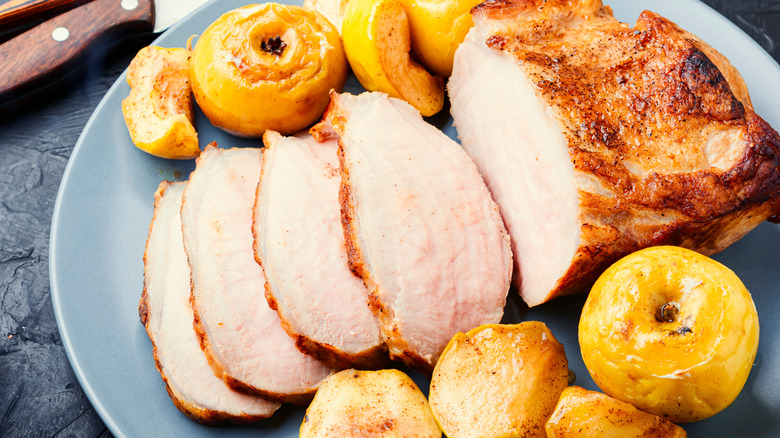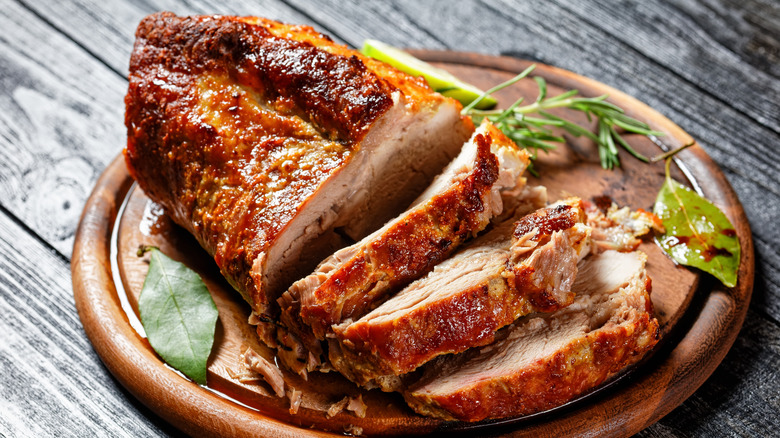Why You Shouldn't Braise Pork Loin
There are many cuts of meat that are absolutely perfect for braising. Chicken thighs, beef short rib, oxtail, brisket, lamb shanks, the list can go on and on. And there is a common theme throughout all of these cuts — they are not, depending on who you ask, the choicest cuts of meat. They're not filet mignon, chicken breast, or sirloin steak. These cuts are fatty. They can be tough, filled with sinews and cartilage that will tense up if cooked too quickly on too high a heat. These are the best braising cuts because they are the ones that will steadily soften and release flavor the longer they cook.
Braising is a revered technique prized by professionals and home cooks alike for coaxing excellent flavor out of these tougher meat cuts. A two-step process, braising starts with a pan sear and ends with the meat partially submerged in liquid, set to cook nice and slow for a long time. During the braising, all of the meat's juices are released, and the fatty sinews and connective tissue are dissolved to give you gorgeous, melty meat.
Pork is a particularly good meat for braising. Braised pork shoulder makes for excellent and succulent pulled pork, while slow-cooked spare ribs fall right off the bone. There are certain cuts of pork, however, that do not lend themselves well to braising. Pork loin, for instance, is really not the best cut to subject to this low, slow, moist cooking method.
Better for roasting
The thing about a pork loin is that it doesn't really meet those previously listed qualifications for what makes a good braising cut. Pork loin is not overly fatty. It does not have any aggravating sinews or tough connective tissue to break down. In fact, pork loin is one of the more choice cuts of the pig — one that's lean and can be beautifully tender and juicy.
The problem with braising a pork loin is that because it is a leaner cut, the meat will actually get tougher the longer it's cooked in the liquid. It seems a bit of an oxymoron. You would think cooking meat in liquid would make it juicier as opposed to less. But since pork loin — like filet mignon — does not have those sinews and fatty tissue to break down, the juices just end up getting leached out into the cooking liquid. You're then rendered with a rubbery, dry loin that can break apart quite easily.
Roasting is a far better way to cook pork loin. When you roast a pork loin, you're cooking at a moderate to higher temperature for a shorter period of time. Roasting not only keeps the pork loin's shape, giving you nice, uniform slices, but it also holds onto the juices better — provided you give it a good primary sear and let it rest when it's done roasting. What you'll get is a nice, juicy cut that slices easily and goes down the hatch even better.

